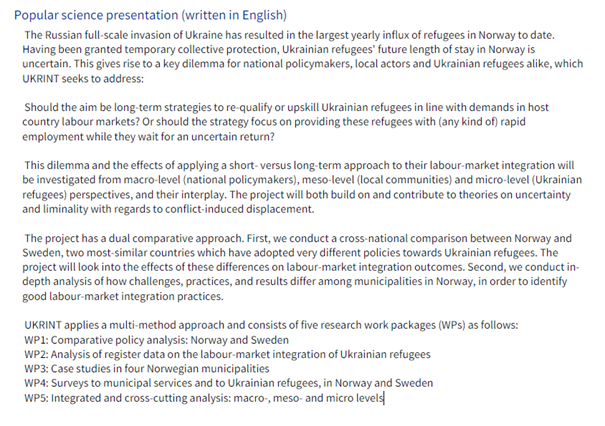Self-Care Programs and Policies: Exploring Roles of Social Advisors and Professionals in Health Promotion (OsloMet – HV)
Project background
Self-care is increasingly recognized as a critical component of health and well-being, offering individuals the ability to manage their health autonomously while reducing the burden on healthcare systems. The WHO Consolidated Guidelines on Self-Care Interventions highlight its potential to promote equity and accessibility, particularly for vulnerable populations
This project seeks to investigate how self-care programs and policies are implemented nationally and internationally, with a focus on the roles of social advisors and community-based professionals, such as pharmacists, health advisors, or social workers. These professionals bridge healthcare systems and communities, making self-care more accessible and sustainable. The project also emphasizes the social, cultural, and policy dimensions of self-care, aligning with the humanities and social sciences perspectives.
Project aim
To explore and analyze the role of social advisors and related professionals in promoting self-care, with a focus on their impact on health outcomes, equity, and accessibility in diverse contexts.
Hypotheses
- Social advisors and community professionals significantly enhance the adoption of self-care practices, especially in underserved communities.
- The integration of self-care into existing social work and advisory frameworks improves individual health outcomes and reduces healthcare disparities.
- Cultural, social, and systemic barriers influence the effectiveness of self-care programs, requiring tailored approaches in different regions.
Proposed Themes and Research Questions
Students can focus on one or more of the following:
Themes:
- Comparative analysis of self-care policies across different countries or regions.
- The role of social advisors in facilitating self-care among marginalized groups.
- Policy development and implementation challenges for self-care in healthcare and community settings.
Research Questions:
- How do social advisors and other professionals support self-care adoption in different cultural contexts?
- What are the barriers and enablers of self-care practices in vulnerable populations?
- How do self-care policies align with broader social welfare and health equity goals?
Data and resources
- The WHO Consolidated Guidelines on Self-Care Interventions and related international reports
- Case studies and policy documents from countries with established self-care frameworks
- Potential collaboration with local or international organizations for interviews, fieldwork, or secondary data analysis
Relevant for
The project is highly relevant for the following study tracks:
- Social Work: Investigating the role of social workers in promoting self-care.
- Child Welfare and Family Treatment: Addressing how self-care impacts family health dynamics.
- Nordic Social Policy and Global Sustainable Development / MIS: Analyzing policy frameworks and their cultural adaptability.
We understand the importance of aligning the project with students’ interests and expertise. While we propose social advisors and community pharmacists as potential focal groups, the target group can be negotiated based on the students’ thematic preferences within the framework of self-care programs and policies.
The project can accommodate 1–2 students. Language can be Norwegian or English.
Contact person
Parisa Gazerani, PharmD, PhD, Professor
Pilestredet 50, 0167 Oslo, Office number: L239
Office: +47 672 35 397
E-mail parisaga@oslomet.no
Webpage
